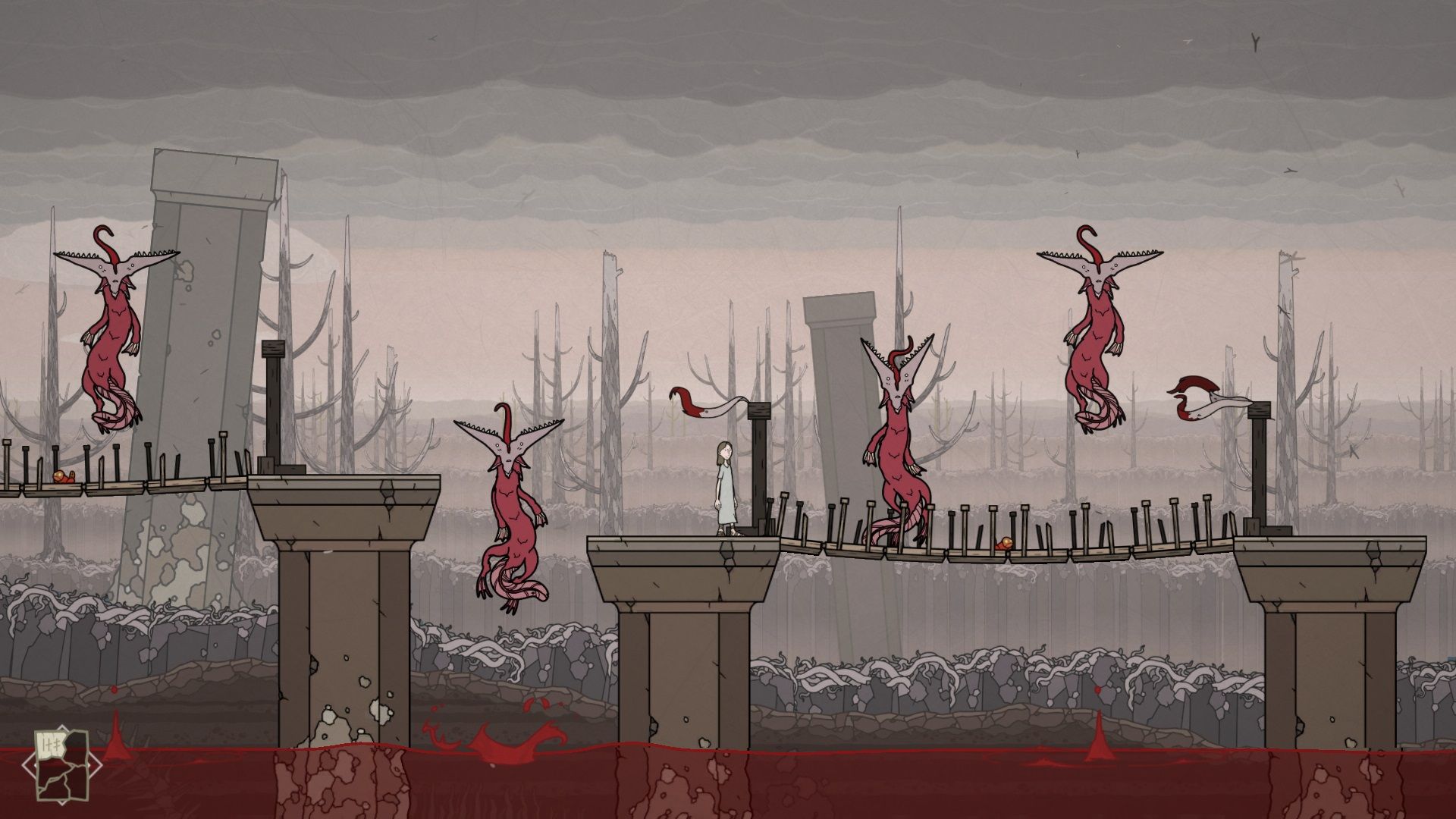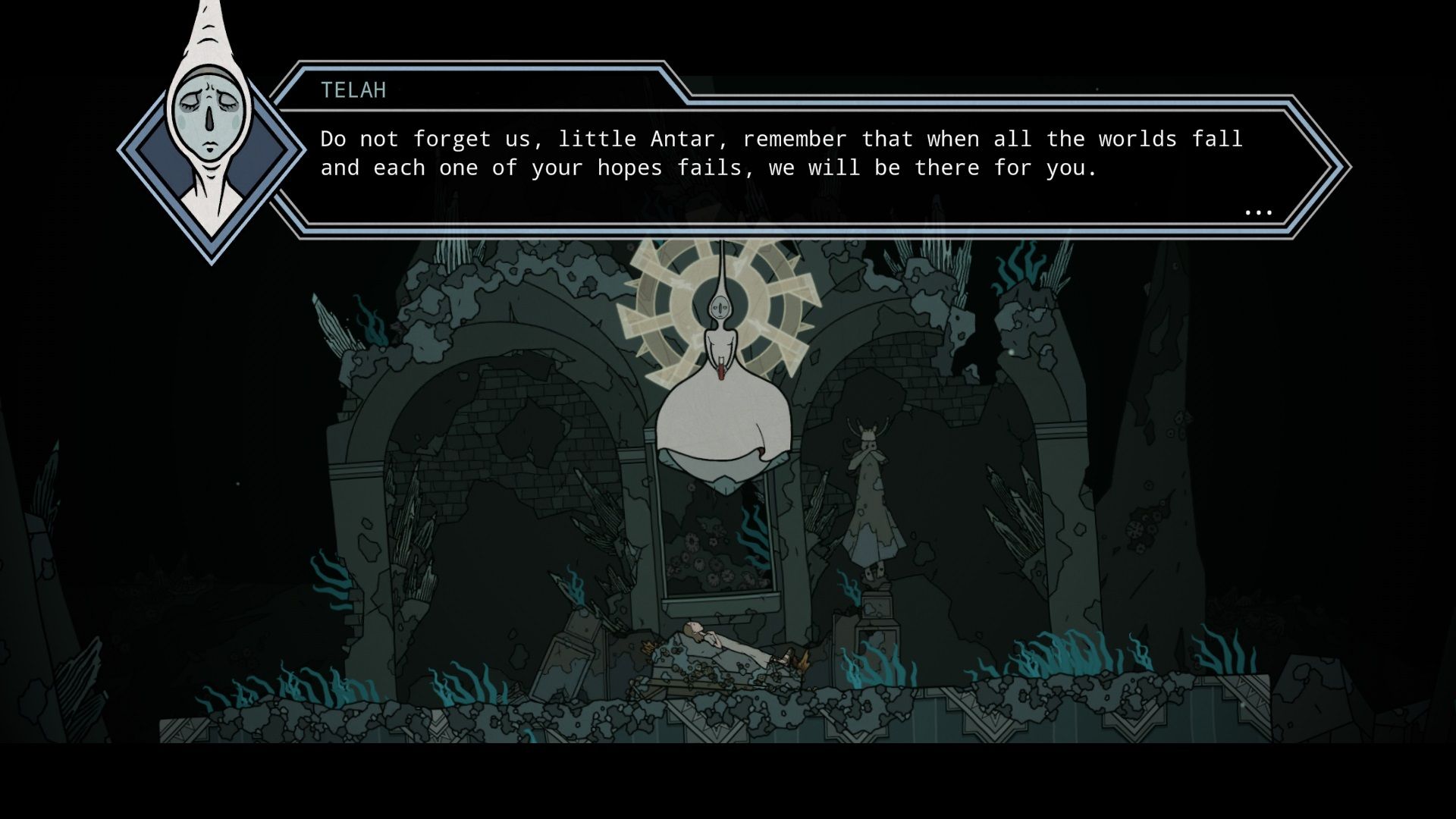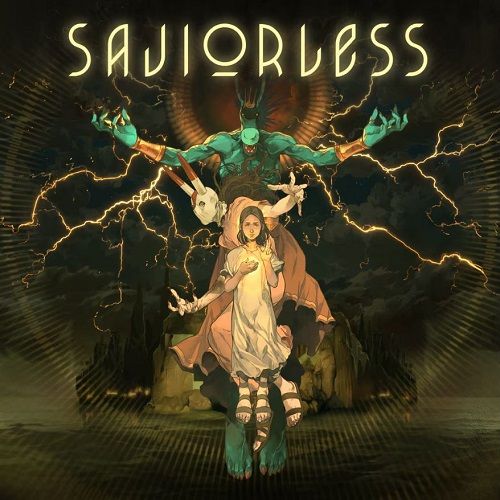Saviorless Review
Saviorless is a 2D platformer with action elements, a gothic and religious horror atmosphere, and charming cartoony graphics that showcase some really unpleasant things. The narrators have botched the story they’re telling and the characters are fighting for the protagonist role. The controls are both frustrating and very fun, and the environments are both beautiful and unsettling. In short, it’s a game of contrasts.
In this title, an elderly narrator leads two apprentices through the story of Antar, a would-be savior traveling to the Smiling Islands. However, the kids are tired of Antar as a protagonist and his story ending with failure. When their teacher’s attention lapses, they switch to a new protagonist. Soon, the broken narrative begins to spiral out of control.
The secret of the Smiling Islands awaits, as does the truth behind why Antar has been doomed by the narrative. And even after Antar gains the power of a Savior, breaking out of the path laid for him may be impossible.
Saviorless is a religious horror game about trying to escape the path laid out for you… and a meta horror game about the price of defying the narrative. If you’re interested in weird meta games, you owe it to yourself to check Saviorless out. Everything from the art to the sound design to the frustrating gameplay is designed to enhance its storytelling.
Characters at War With the Narrative
Saviorless presented me with a lot of visual worldbuilding, but very few solid answers as to what set Antar’s story in motion. Lingering questions about where Antar came from, what a savior actually does, and what the Smiling Islands are haunt the game. However, nothing haunts this game more than the narrators and the implications of their existence.
The story of Antar wasn’t meant to go this way. But a pair of careless children threw the tale off the rails, and now everything is in jeopardy. As the game continues, more narrators appear to try and guide Antar to the outcome they desire. And another character, the hunter Nento, begins trying to take control of the narrative for his own purposes. The result feels like a religious parable gone wrong.

The game spends a lot of time questioning what it means to be the protagonist of a story. And what it means to be the narrator telling the story. It openly questions how much control the narrator actually has, especially when two protagonists are going head-to-head over the story’s outcome. And the frustrating gameplay only adds to the already thick atmosphere.
Saviorless combines a dense and unpleasant atmosphere straight out of a FromSoft title with meta storytelling, difficult platforming, and cartoony art direction. The result is far more than the sum of its parts.
Saviorless is 2D Platformer Meets Soulslike
Saviorless looks like a playable graphic novel. This allows the game to show some truly disturbing imagery without losing its simple visuals. The result feels slick and modern as well as uncanny and full of decay. It all feels like a cartoony take on the kind of ruined dark fantasy world that populates the Soulslike genre.

Antar, Nento, and Savior all resemble archetypes from religious or gothic horror, reinterpreted through a simplified, cartoony art style. Antar looks very much like a depiction of a young saint or a figure from Greek mythology. Savior’s masked visage and Nento’s horse-like head evoke a twisted, decaying atmosphere of humanity warped and betrayed.
There are some genuinely beautiful and genuinely chilling environments in this game, especially once Antar and Nento arrive in the Smiling Islands. And the soundscape includes some genuinely soothing music right alongside desperate, inhuman screams as a platforming obstacle. The player is often presented with the option to kill helpless creatures. And even hostile enemies have shockingly gruesome death animations.

Antar moves slowly, can’t run, and his jump animation takes quite a while. I had to think fast on my feet to get him where he needed to go. The platforming also starts out fairly simple, but by the halfway point the difficulty curve ramps up tremendously. Adding Savior’s time-limited action sections adds a new kind of stress. It was impossible to relax while playing Saviorless. And for a game about creeping unease and fighting the narrative, that’s perfect.
No Room For Error
Saviorless is pretty short–it can be completed in about 4-5 hours–but it’s an intense and grueling experience. Antar’s controls are a bit sluggish and his jump is a bit floaty, which can make his levels more of a precision platforming experience. If you don’t jump at exactly the right time, you’re going to die. This makes his chase sequences a complete nightmare. Especially since he has no attacks to speak of.
In contrast, Nento and Savior have much slicker controls and fast-paced combat skills. But Antar can only spend so much time as a Savior before he must return to his mortal body. And while Nento possesses overwhelming power, he’s not using it to make things better. Saviorless switches up its gameplay often enough to keep the player from settling into any sort of comfort with the controls. I think this is on purpose and it worked beautifully.

There is very little margin for error in most of Antar’s puzzles. Savior and Nento’s puzzles are comparatively simple because they can at least dash and hit people. Boss fights are a stressful, frantic experience right out of a Soulslike title, with a focus on trial and error. It’s technically fair but it sure is difficult. Each level also has collectible pages that are required to complete the story properly. Fortunately, if you miss a collectible, you can talk to an NPC to redo the level and find it.
All in all, Saviorless is an intense experience that I recommend to fans of difficult platforming and metafiction. The controls are frustrating on purpose, the puzzles are merciless, and the atmosphere is designed to stress you out. But the narrative is fantastic, especially when it’s at war with itself.
***PC code provided by the publisher***
The Good
- Unique art style
- Fascinating narrative
- Interesting meta elements
- Thick atmosphere
The Bad
- Difficult platforming
- Sluggish controls
- Frustrating on purpose
- Short

